The KGB Museum in Riga is probably the eeriest location in the whole country. Don’t let the beautiful art nouveau facade mislead you: the so-called Corner House is a place where thousands of Latvians suffered during the Soviet occupation.
Today, the former KGB building in Riga belongs to the Museum of the Occupation of Latvia, which covers the period between 1940 and 1991. It is a spot of remembrance for the people that lost their lives during this horrible period. The former Soviet state police are long gone, and the museum is open to the public. Moreover, the guided tours offered in the Corner House give a rare insight into Riga’s turbulent years.
On a recent journey to Latvia, I had the opportunity to visit the former KGB building in Riga and join a guided tour. The building’s history is too dark to be forgotten, and its future as a museum remains unknown. Therefore, in this article, you will find lots of information about the KGB Museum in Riga, accompanied by several photos. Moreover, straight below, you can watch a 4K video I shot during the guided tour containing original audio.
Let’s start.
*Some links are affiliate links. It means that if you buy something, I might earn a small commission at no additional cost to you.
KGB Museum in Riga: A brief history of the Corner House
Originally built in 1912, the Corner House at Brivibas Iela 61 initially housed apartments, shops, and a music school. However, after the end of the Latvian War of Independence in 1920, the new government used the building to host state offices and other government organizations. It was in 1940, when the Soviet Union occupied Latvia, that the building became, for the first time, the KGB Headquarters.
However, the first period of the KGB in Riga was short-lived. It lasted more or less one year, and at the peak of the repression, they deported more than 15,000 people overnight to Siberia on June 13, 1941. A few days later, the Nazis occupied Riga (July 1, 1941), and soon the Corner House had new residents: the puppet government the Nazis appointed.
The KGB returned to Riga in 1944 when the Soviets reoccupied Latvia. And the KGB operations didn’t stop before 1991, when the Russians left Riga.
Latvia’s Independence
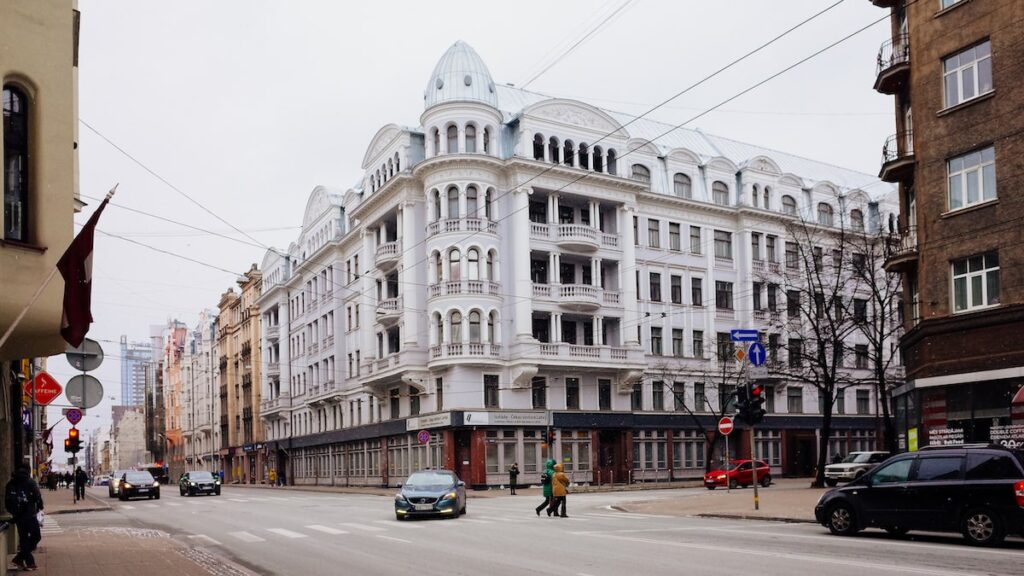
After the Fall of the Soviet Union, the Latvian State Police took over the building in 1991. They stayed there until the summer of 2008. At this time, it was decided that the Corner House should finally find some peace. So, while its past will haunt its walls and prison cells forever, the decision was to create a museum on its premises.
On the occasion of Riga’s nomination as the Capital of Culture in 2014, the building found a new usage. Since 2015, the former KGB building has belonged to the Museum of Occupation of Latvia and presents the dark history of the KGB in Latvia. Despite the renovation of its facade, the building’s future is uncertain. On the KGB tour I joined, the guide mentioned that the building was in really bad condition and it might collapse in the near future.
Will this be a relief for some of the locals? According to the tour guide, so many people suffered in its rooms, so they won’t probably miss it. More than thirty years after the restoration of Latvia’s independence, some people are still scared of walking close to it.
Entering the KGB Museum in Riga

Seeing Riga’s Corner House from the outside, and leaving its dark history aside, will indeed mislead you. Despite being in decay, it still looks like an architectural achievement of the art nouveau period of the city. Its location is prime, too: the Brivibas Iela is Riga’s main avenue. The 12-kilometer-long street can take you from the Old Town to the outskirts.
For such an imposing building, it’s a surprise to see its door. One might expect a fancy, old-fashioned door leading to the interior. But no, that’s not the case. It is a small, narrow door, and when you open it, you can also see a small hall. This door was a one-way ticket to a dark cell block for thousands of people during the KGB era. According to the guide, whoever entered through this door, never returned to their previous life.
There’s a small window, and behind it, a woman asks me if I’m here for the tour. I nod affirmatively. “Please wait here,” she says, “it’s too cold today to wait outside.” I was at the KGB Museum twenty minutes earlier, and it’s freezing in Riga.
Instead of waiting, I choose to walk through the ground floor. That’s the only part of the building you can see on your own -an hour later, I’ll figure out why.
On the ground floor of the Riga KGB Museum
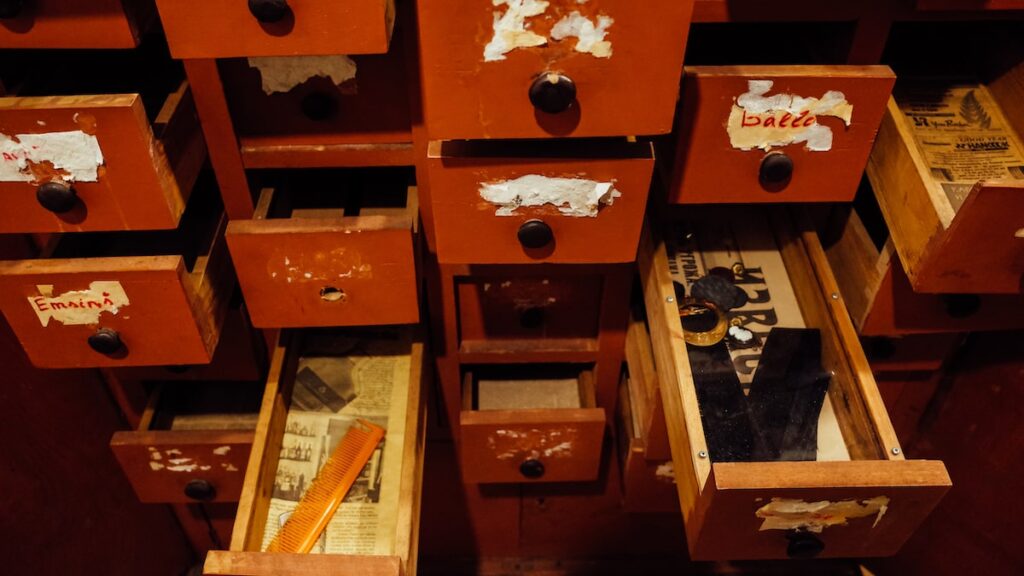
You won’t get a proper impression of the place if you don’t take the guided tour. While the entrance is free for the ground floor, you won’t “feel” what happened there.
However, the ground floor of the former KGB headquarters offers a great introduction to what comes next. There is an exhibition with informational panels and a couple of photos that give you an initial impression of the building. Parts of the background story are there, and going through the written words will offer an insight into the dark era.
For example, the entrance on the corner of Brīvības iela and Stabu iela was the one that people would enter between 1944 and 1991. However, the Soviet Secret Police officials, known as Cheka, could use three more entrances. If you had received a letter to appear for interrogation, you should come here and use the door in the corner to enter.
There was also a mailbox with a peculiar sign: “For Complaints and Petitions.” Practically, this mailbox encouraged anonymous denunciations: you could report your neighbors or friends if they were acting against the State. What did this mean? Well, if you overheard someone telling political jokes or listened to Western broadcasts, you could denounce them.
The KGB Museum in Riga: The tour
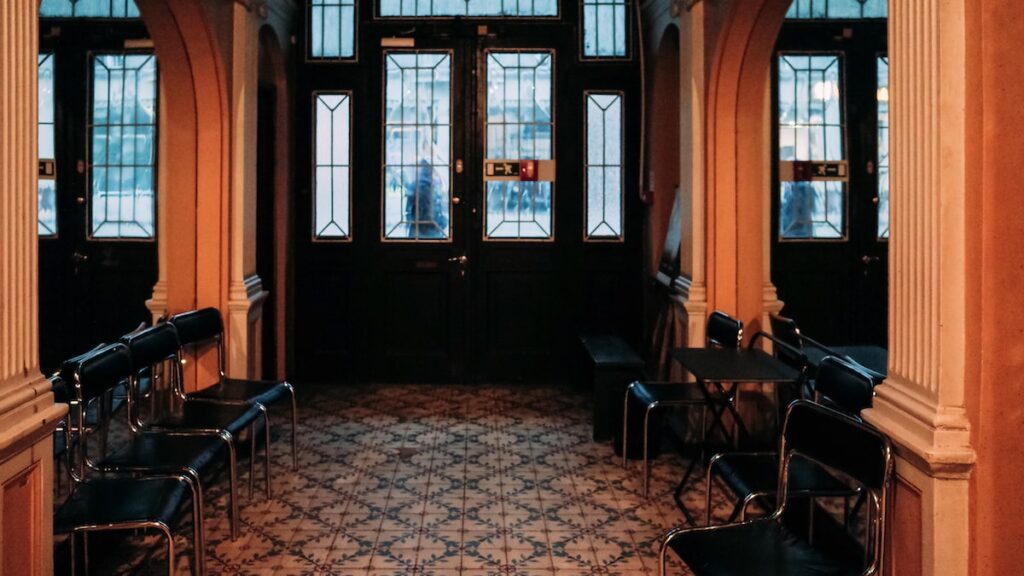
At 3 pm sharp, the guide appears, and the tour starts. Having a guide means you can go through parts of the building that otherwise will not be accessible. That’s not because they want to make money. It’s because the whole building is like a labyrinth, and you can get lost inside its corridors in no time. In addition, the building’s condition is terrible, and if no public funding is provided, it might not exist in a few years.
The guide drives us to a hallway. It honestly seems rather bourgeois. “The tiles are original, and so is the ceiling. The mirrors around you are replicas, though,” she informs the group. Then, after seeing a lift that resembles a coffin, we move toward the rooms.
The rooms are indicative of a totalitarian regime. There’s the room where the prisoners and the inmates were photographed. They left all their belongings there and were assured they would get everything back when the interrogation was over. Apparently, no one got anything back. People weren’t released, and they spent months inside the building.
The KGB interrogation rooms
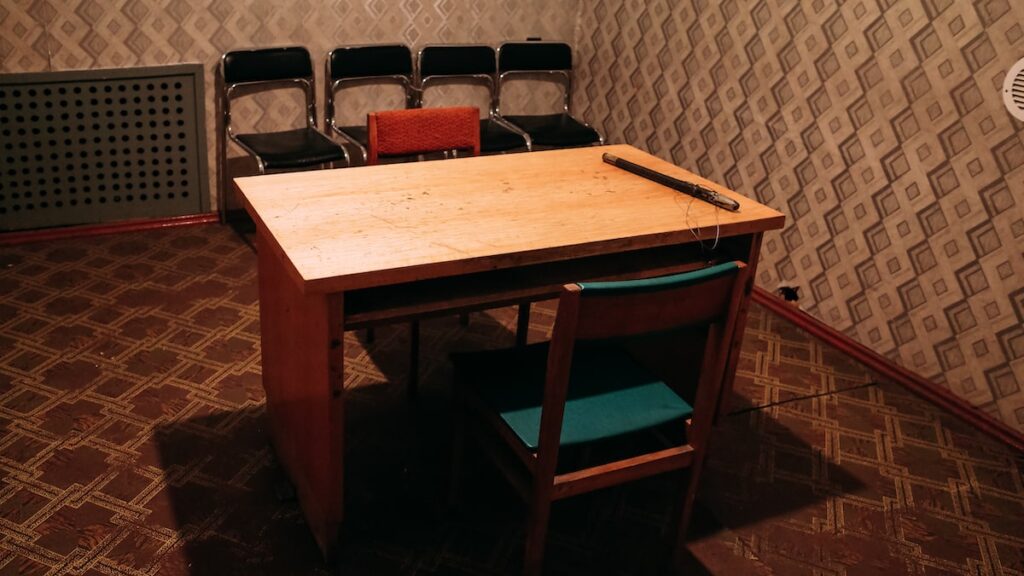
And then, you see the interrogation rooms. They were plain: a chair for the KGB officer, a chair for the inmate, and a table between them. And, of course, a truncheon: if the prisoner didn’t cooperate, they would be beaten.
The guide shares some background info about the procedure. Then, she asks for a volunteer from the group to imitate an interrogation. She starts with a simple question: “When did you start working for the Americans?” Whatever the inmate replies, she will insist until she gets an answer -even if the response was “Never.” And then, word by word, she’d alter the words until she got something that could trap the inmate. Even if they never did anything against the State, the point was to accuse them. And they always did that.
The KGB prison cells
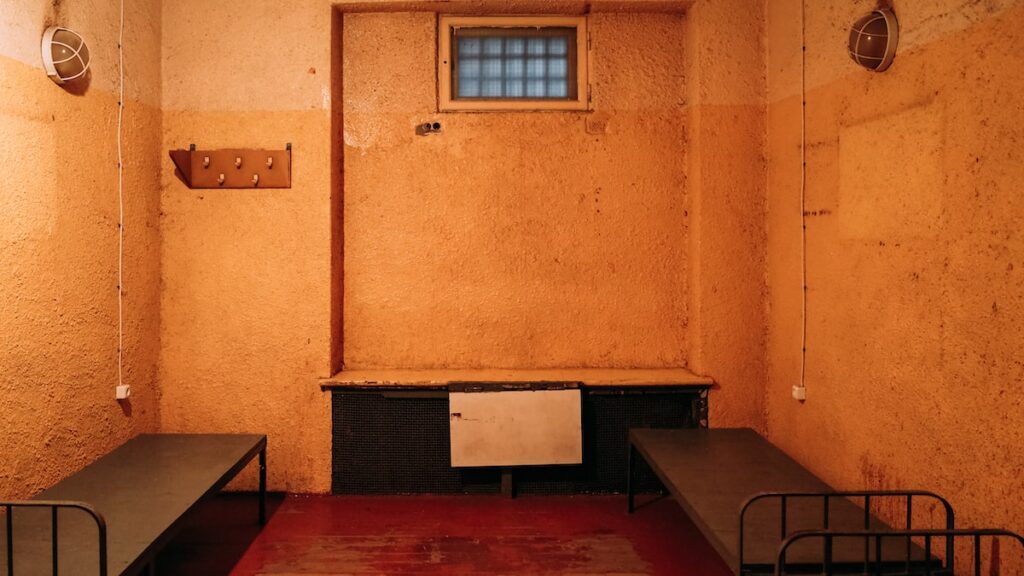
The most shocking part of the tour (well, before the final one) is the basement. There you can see rows of small cells that used to accommodate the prisoners. It was pure torture to be there. They are the size of a small double room, but they hosted almost twenty people. The guards wouldn’t turn off the lights at night; some had windows, but they were covered. The beds had no mattresses, and the toilet was just a basket.
Among the inmates was always somebody working for the Riga KGB. They would pretend they were also prisoners and share made-up stories. These people were the State’s snitches: they tried to acquire information about other prisoners to trap them and have evidence against them.
There’s also a kitchen in the basement. However, don’t imagine anything like proper food. The food usually consisted of soups, and it was prepared unwashed.
Getting fresh air wasn’t really part of daily life in the KGB prison. The inmates could exit to a narrow, depressing yard for a few minutes every day. It looked like a cage, and I doubt there was any sunlight. The day I visited the KGB Museum in Riga, there was a light snowfall. Above the inmates’ heads, an armed guard would observe them from a small corridor. If they spoke to each other, they would be punished, i.e., tortured.
The execution chamber at the KGB building in Riga, Latvia
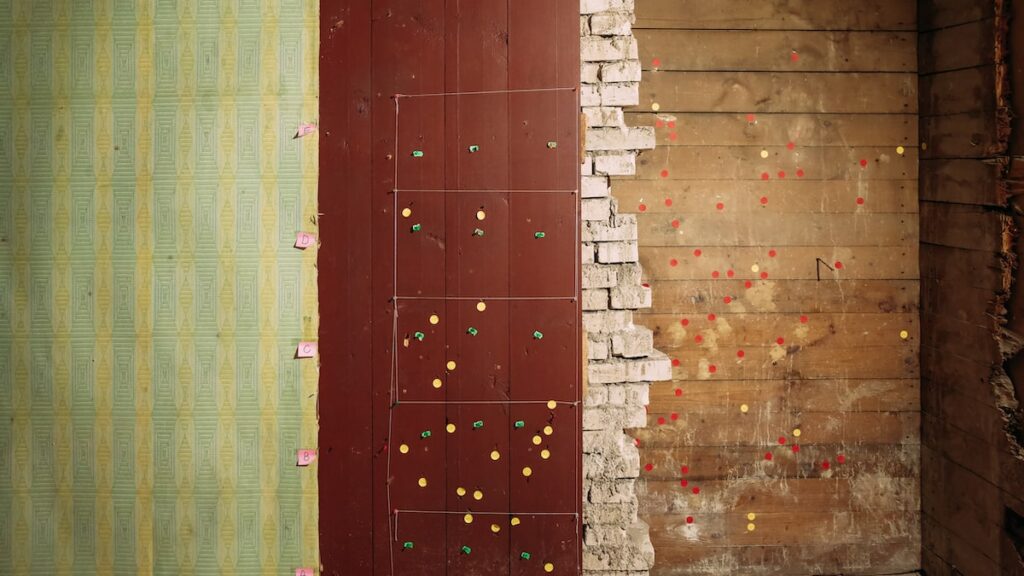
The last room of the tour is the most terrifying one. Don’t imagine something like a big space. It is a small room like the previous ones. All you can see is a wall. That’s where the people stood and waited to die. Fortunately, the blood is washed off, but the bullet holes remain. In the photo you can see above, the yellow marks show these bullets.
Death sentences usually took place at night, starting from 22:00. The sentenced inmate was taken from the cell to the execution chamber with hands in handcuffs or tied up. In the execution chamber, a Cheka officer would stand next to the door; then, he fired a shot to the forehead.
The walls of the execution chamber were covered with wooden panels and additional layers of rubber-coated fabric. A hole in the room’s corner collected the blood of the person executed. The doors had extra noise isolation material to muffle the sound of the shots. Moreover, a truck engine kept running straight outside the room.
Afterward, the KGB officers wrapped the dead bodies and buried them in the forest.
Why was it called the Corner House?

During the Soviet years, the names of the streets were different. In the case of the Riga KGB Building, the names were Lenin and Friedrich Engels Street instead of Brivijas and Stabu Street. Therefore, the name “The Corner House” has a connection to the two historical figures.
How to visit the KGB Museum in Riga

You can find the KGB Museum in Riga at Brīvības iela 61, Rīga, Latvia. It is approximately 1 km from the Freedom Monument. See and save its location on Google Maps.
The KGB museum is open daily between 10:30 and 17:30.
Regarding the guided tours in English, they usually start at 11.00, 13.00, 15.00, and 16.00; however, it’s better to cross-check their schedule before booking. It is strongly recommended to be at the building at least 10 minutes before the starting time.
The guided tours cost 10 euros for adults and 4 euros for students. The guided KGB tours are always sold out; therefore, it’s better to pre-book in advance. Due to the building’s condition, not more than 20 people can attend them. You can reserve your place here.
The KGB Museum in Riga, Latvia: Final thoughts
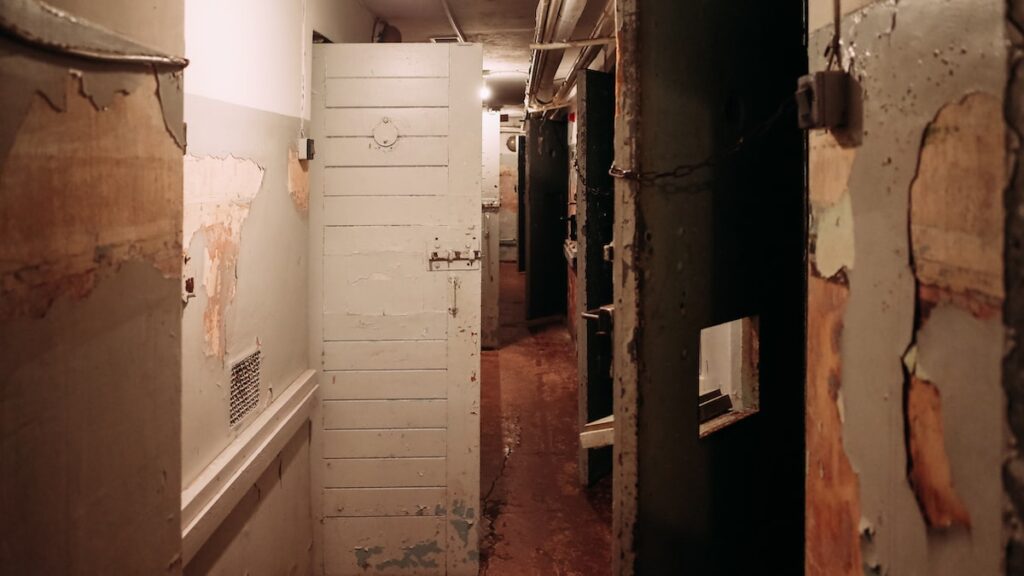
After the restoration of Latvia’s independence in 1991, the KGB was declared a criminal organization. The KGB Museum Riga is obviously one of the top things to see in Riga due to its historical importance. Moreover, as a place of remembrance, it is undoubtedly an example of humanity’s atrocities due to political oppression. Therefore, a visit is recommended if you happen to travel to Riga.
Last but not least, I can only encourage you to take the guided tour. It deserves every penny and will give you access to rooms you can’t otherwise see. Your guide will speak English fluently and will share lots of background info about the former KGB Headquarters in Riga. Don’t miss the chance.
More about Latvia: The House of the Black Heads, Art Nouveau architecture in Riga
Pin it for later

Sharing is caring. Share this article about the KGB Building in Riga with your friends.
Last Updated on January 28, 2023 by George Pavlopoulos

